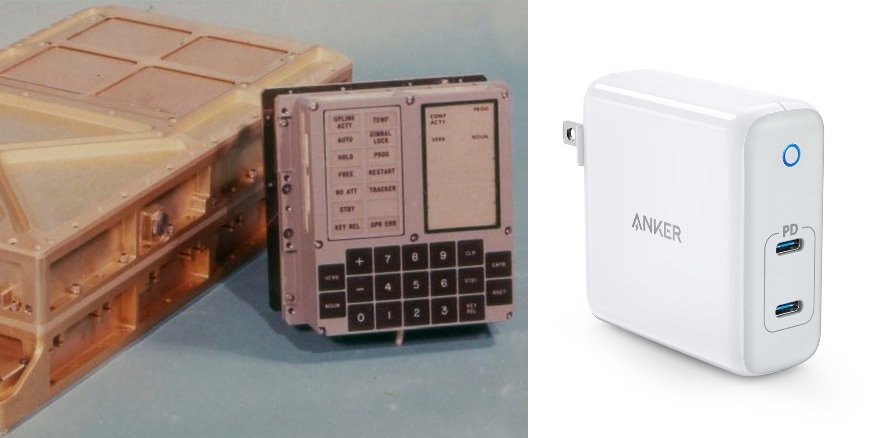Even today’s simplest accessories include more powerful computers than were used decades ago. To demonstrate, an engineer set out to prove that a USB-C charger from accessory-maker Anker includes a more capable CPU than the one that guided Apollo 11 to the Moon.
Moon rocket vs. USB-C charger
The Apollo 11 Guidance Computer spacecraft helped get men from the Earth to the Moon and back in 1969. All the CYPD4225 processor in Anker’s USB-C charger needs to do today is be sure this accessory sends the correct amount of current to the computer it’s plugged into.
But, as engineer Forest Heller points out on his website, “The most powerful CPU in the table is from the Anker PowerPort Atom PD 2 (CYPD4225). Compared with the Apollo 11 Guidance Computer it runs at ~48 times the clock speed with 1.8x the program space.”
The engineer does a spec-by-spec comparison of the two processors, one from the 1960s and the other from today. In this, he’s aided but the fact that both are relatively simple, without complications like cache and vector/matrix hardware. In the end, he judges that the CYPD4225 is “563 times faster than the Apollo 11 Guidance Computer.”
Plus, the processor Anker used has a bit more than twice as much RAM as the one NASA had available.
Not mocking the Apollo 11 Guidance Computer
The fact that the computer industry has progressed tremendously in the last 50 years is no reflection on the computer in the Apollo 11. It was a marvel of engineering for its time — desktop models like the Apple II wouldn’t become as powerful for another decade.
The Apollo Guidance Computer wasn’t a gloried calculator. Despite its limitations, it controlled the spacecraft on its lunar mission, handling navigation and guidance.
The fact that it’s now been surpassed by a USB-C charger is just a real-world example of Moore’s Law in action. Computers inevitably get faster, and older ones get relegated to museums.
Which isn’t so say Anker’s USB-C chargers are slouches either. The Anker PowerPort Atom III Slim is tiny but can still put out 30W to quickly power up an iPad Pro or even a MacBook.



